Have you spotted worms in your fish tank, perhaps crawling up the aquarium glass?
Unfortunately, worms are not uncommon in fish tanks. The most commonly seen types of wrigglers that you see in home aquariums are planaria worms or detritus worms. But are those tiny white worms dangerous to your fish? What species of worms are they? And how do you get rid of them?
Keep reading to learn how to get rid of worms in your fish tank and how to prevent them from coming back!
Worms In The Aquarium
Keeping fish in a home aquarium is an enjoyable hobby, but it does present challenges in the form of maintaining water quality, feeding, and fish health. Worms in the aquarium are one of those challenges.
Depending on the system and setup you have, worms can be a natural, perfectly normal, and unavoidable occurrence. However, sometimes worms in your fish tank can indicate that there’s a serious problem with the health of your system.
Are They Common?
Yes, worms in your fish tank are surprisingly common. Some of these parasites are harmless and more of a nuisance than a concern, others can tell you that there’s a problem with conditions in your aquarium, but some do present a danger to your fish.
There are many ways in which roundworms and nematodes can get into your fish tank, which we’ll discuss later in this article. The good news is that you can get rid of these crawling critters relatively easily, and most of them don’t harm your fish. Even the best-maintained tanks can harbor a few worms.
For example, recently, after adding a few new plants to my tank, I spotted a white worm wriggling up the viewing pane of my tropical tank! The water quality is fine in there, so I can only assume the critter hitched a ride on the plants. All I needed to do was to pick the worm off the glass and dispose of it, and that was that.
Where Do Aquarium Worms Come From?
So, how do those nasty little white crawlies get into your fish tank in the first place?
Plants
Probably, the most common mode of transport for many species of aquatic worms is on plants, especially if the plants have been kept in the same tank as fish. Many fish stores display some of their plants in livestock plants or in large baths that also contain a few small fish, such as guppies and female bettas.
When you buy plants for your tank, choose those that are supplied in sealed packs or are sourced from aquatic plant specialist growers and kept separately in tanks that don’t house any fish.
New Fish
New fish are a common source of worms, especially parasitic worms. External parasites can be attached to the fish’s body or gills, and many are visible to the naked eye if you look closely. Unfortunately, you generally don’t spot the unwanted hitchhiker until you get your new fish home and it’s in your aquarium, by which time it’s too late.
Pro Tip
When buying new fish, always take the time to examine your purchase very closely for signs of parasites before you hand over your cash. And be sure to quarantine fish for at least 14 days before introducing them to your main tank.
Fish Food
Although many omnivorous and carnivorous fish species love to eat live food, that can be a way in which parasitic worms find their way into your aquarium.
Often, the worms are carried in the water that the food is supplied in. So, before you add the food to your tank, strain it through a very fine sieve or a piece of muslin cloth.
Unless you keep fish species that will only eat live food, I recommend that you offer your fish frozen meaty protein sources instead. Frozen foods won’t harbor any harmful bacteria or parasites that could infest your tank, and they often contain added vitamins for excellent fish health and color.
Snails
Sometimes, ornamental aquatic snails can be infested with snail leeches. Although these creatures won’t harm your fish, they’re not great news for your snails.
As with plants and new fish, always quarantine snails for at least two weeks before you introduce them to your main display aquarium.
How Can You Tell If Your Tank Contains Worms?
It’s not always easy to tell if your tank contains worms. That’s because these creatures are largely nocturnal. But just because you can’t see them, that doesn’t mean the worms aren’t there!
Worms are light-sensitive, so they tend to hide away in the dark safety of the substrate, plants, rocks, and other decorations in your tank during daylight hours or when your tank lights are on. So, the best way to spot these creatures is either at night or when the lights have been switched off for a couple of hours. Use red lighting to make the worms visible to your eye, which can’t be detected by the parasites.
However, even if you only spot a couple of worms, that could be the tip of the iceberg. Worms grow quickly and reproduce extremely rapidly. Some of those tiny, innocent-looking creatures can grow to reach 24 inches in length! So, I recommend that you get rid of them before they reach sea monster proportions!
Also, there are some species of worms that attack the fish internally, such as the tapeworm. In those cases, the only sign you’ll see that your tank has a worm problem is when your fish get sick or fail to thrive.
7 Small And Large White Worms In Fish Tanks
Here are the seven most common species of worms that are found in fish tanks, together with some helpful information on their identification and how to remove and prevent them.
1. Planaria
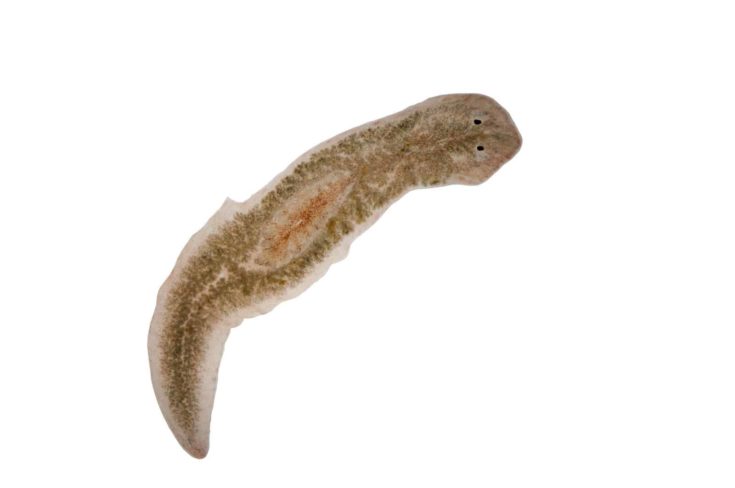
Planaria is a common species of aquarium worm. These flatworms can be found in freshwater and saltwater. The creatures are asexual, meaning that they can reproduce without mating. If you cut a planarium in half, it will grow into two separate worms!
Although not dangerous to fish, planaria are carnivorous scavengers that will eat fish eggs.
Causes
Planaria are mostly carried into the aquarium on pond plants, especially if the plants are taken from the natural environment.
How to Identify
Planaria are tiny, whitish-beige worms that have two distinctive eyespots on a flattened head. You often see these worms crawling on the aquarium glass.
How to Remove
Chemical treatment is the only way to get rid of planaria.
Any product containing Trichlorfon should be effective.
How to Prevent
- Wash new plants thoroughly and quarantine them for 14 days.
- Buy plants that haven’t been kept with fish.
- Don’t take plants from the wild environment for use in your fish tank.
2. Detritus Worms
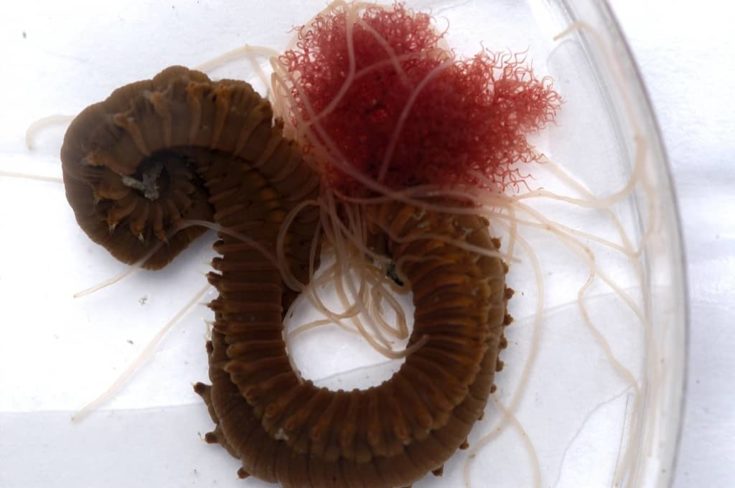
Detritus worms (Naididae) are probably the most common species of aquarium worms that infest the home tank, belonging to the same family of segmented worms as earthworms and leeches.
Detritus worms are detritivores, which means that they feed on decomposing organic matter. These critters are not harmful to your fish. In fact, there are some fish that eat any detritus worms that they find on the substrate.
Causes
Detritus worms often find their way into your fish tank with new fish and on plants. However, they can also be imported accidentally in gravel from an existing tank that’s already infested.
Finding hundreds of detritus worms living in your fish tank means that your tank cleaning is not up to scratch. Overfeeding can also exacerbate the problem. If there is an oxygen shortage or the water pH levels are too low, you may see the worms traveling up the water column to the surface.
How to Identify
Detritus worms are whitish-brown in color and are long, thin, and pointed. You’ll see these critters wiggling through the water and between the grains of gravel in your substrate.
You might not even notice a few detritus worms in your tank, only seeing them if there’s a population explosion or you spot them when vacuuming your substrate. The creatures tend to hide in the gravel, living on the detritus that accumulates there. In fact, a few detritus worms can be beneficial to your tank, helping to keep the substrate clean.
How to Remove
- Thoroughly vacuum the substrate.
- Carry out a major water change.
How to Prevent
- Keep your fish tank clean!
- Don’t overfeed your fish
- Don’t overstock
3. Flukes
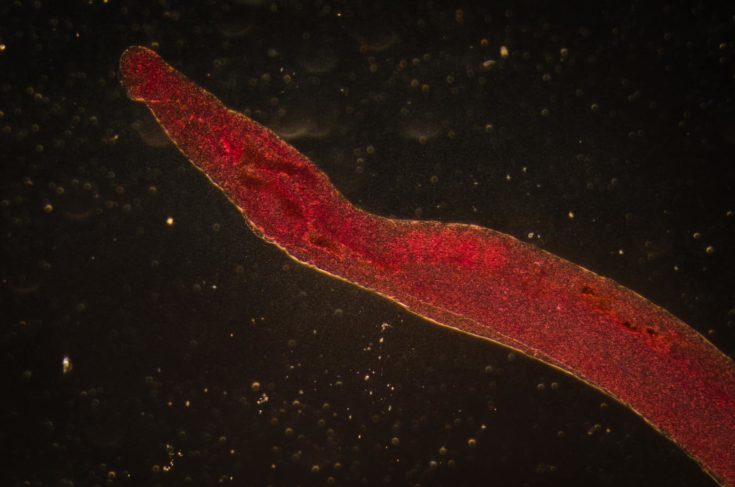
Flukes are classified as trematodes, of which there are several species attack fish. Flukes attack the fish’s gills, eyes, and skin, causing extreme irritation.
These parasites commonly exist in small numbers in many fish tanks, only becoming a problem when fish are stressed.
Causes
Poor water conditions in the fish’ environment, such as poor water quality, stress, overcrowding, and incompatible tankmates.
How to Identify
Large fluke species can sometimes be seen with the naked eye, although many are microscopic. Look out for red patches, ulcers, and sores on the fish’s skin, inflamed gills, and flashing against solid objects in the tank.
How to Remove
- Treat the tank with an anti-parasitic medication that you’ll get from good fish stores.
How to Prevent
- Quarantine all new fish for 14 days before introducing them to your main tank.
4. Anchor Worms
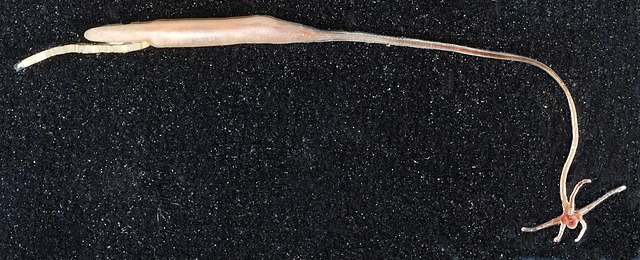
Anchor worms are actually crustaceans of the Lernaea genus. These parasitic worms are dangerous to fish in that they burrow into the fish’s skin, causing ulcers and providing an entry point for bacteria.
Causes
Anchor worms generally find their way into your fish tank attached to new fish or free-swimming in water containing live foods.
How to Identify
Juvenile anchor worms are free-swimming crustaceans that burrow into the fish’s skin. After a few months, the worm becomes visible as ulcers or holes on the fish’s body.
The reproductive section of the worm’s body can often be seen trailing from the fish’s skin.
How to Remove
- Treat the fish in a potassium permanganate bath for about 20 minutes.
- Carry out partial water changes to remove free-swimming worms from the water column.
How to Prevent
- Quarantine all new fish and plants for at least 14 days before putting them into your main aquarium.
5. Hydra
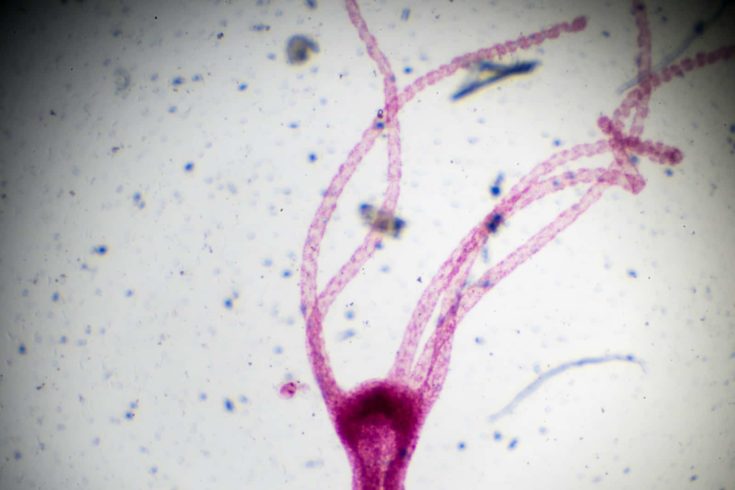
Hydra, or Sweet Water Polyp, can present as white or green in color. These worms form symbiotic relationships with embedded algae in the tank, which is why they sometimes turn green.
Hydras don’t harm fish, but they can be dangerous to shrimp, especially in shrimp breeding tanks, when the hydra attacks baby shrimp. The creatures use their stinging tentacles to shock and paralyze their prey.
Causes
Hydra usually gets into an aquarium with plants or shrimp. The creatures can also be present in algae living on decorations imported from another tank.
How to Identify
Hydra can be white or green and have tentacles, and large specimens can grow up to two inches in length.
You’ll see these creatures settled in exposed areas in the aquarium or stuck to the viewing panes as they lay in wait for prey.
How to Remove
- Shave the polyps from aquarium glass with a very sharp scraper and siphon away with a hose.
- Fog the hydra with a syringe of hydrogen peroxide solution and then siphon them away.
How to Prevent
- Thoroughly clean any items imported from existing tanks, especially those carrying algae. Use a mild solution of bleach and water, scrub the item, and rinse thoroughly.
- Quarantine new shrimp and plants for 14 days before introducing them to your tank.
6. Camallanus Worms
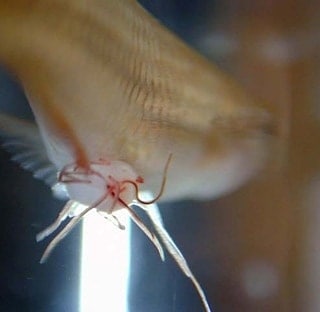
Camallanus worms are common internal parasites that can affect tropical and coldwater aquarium fish.
Once inside the fish, the worms feed on the fish’s blood, irritating the digestive tract and internal organs, eventually causing internal bleeding and secondary bacterial infections.
Causes
Wild-caught fish can sometimes carry Camallanus worms and introduce the parasites to your aquarium. However, poor diet, overcrowding, and poor water quality all serve to stress your fish, which in turn can lead to a weakened immune system, making it possible for the parasites to multiply and damage the fish.
How to Identify
Mild Camallanus worm infestations are very difficult to detect. However, severe infections are identifiable by the appearance of red, thread-like worms that can be seen trailing from the fish’s anus. Mature Camallanus worms can grow to measure a couple of millimeters in length.
Other symptoms to watch out for include loss of appetite, abdominal bloating, losing weight, and failing to thrive.
Mature worms are red, as their diet consists of blood.
How to Remove
- Use antihelminthic medication, such as levamisole, fenbendazole, and praziquantel.
- Once the worms have been expelled from the fish, thoroughly vacuum the substrate to remove them.
How to Prevent
- Quarantine new livestock for 14 days before adding it to your main tank, especially if wild-caught.
- Avoid feeding live foods unless sourced from a reputable supplier.
7. Thorny Headed Worms
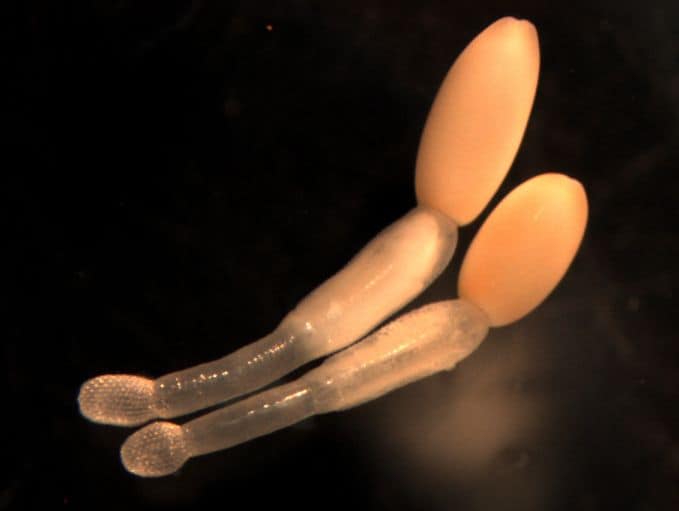
Thorny Headed worms are more correctly known as Acanthocephala. These parasitic worms use spiky protrusions to attach themselves to a host.
Causes
Thorny Headed worms usually enter the home aquarium attached to new fish or with live food.
How to Identify
Thorny Headed worms look like anchor worms, showing up as green or white threads on the fish’s gills.
Infected fish often flash and flick against solid objects within the tank in an attempt to relieve the irritation that the worms cause.
How to Remove
- Put the fish in a potassium permanganate bath at a dose rate of 10ml per liter.
- Carry out a partial water change.
How to Prevent
- Quarantine new fish for 14 days.
- If possible, switch to using frozen meaty foods rather than live foods.
In Conclusion
I hope you enjoyed our guide to the species of worms that commonly infest fish tanks. If you found the article helpful, don’t forget to share it!
Thankfully, most of the species of worms that infest home fish tanks are relatively harmless and can be removed pretty easily. However, there are a few species of aquatic worms that we’ve mentioned, which can be dangerous for your fish.
To prevent worms from getting into your aquarium in the first place, quarantine all new fish, plants, and invertebrates before you add them to your main display tank. Also, you must keep your tank clean and free from organic debris that some worm species feed on.
Did you ever have worms in your fish tank? How did you get rid of them? Tell us about your experience in the comments box below!